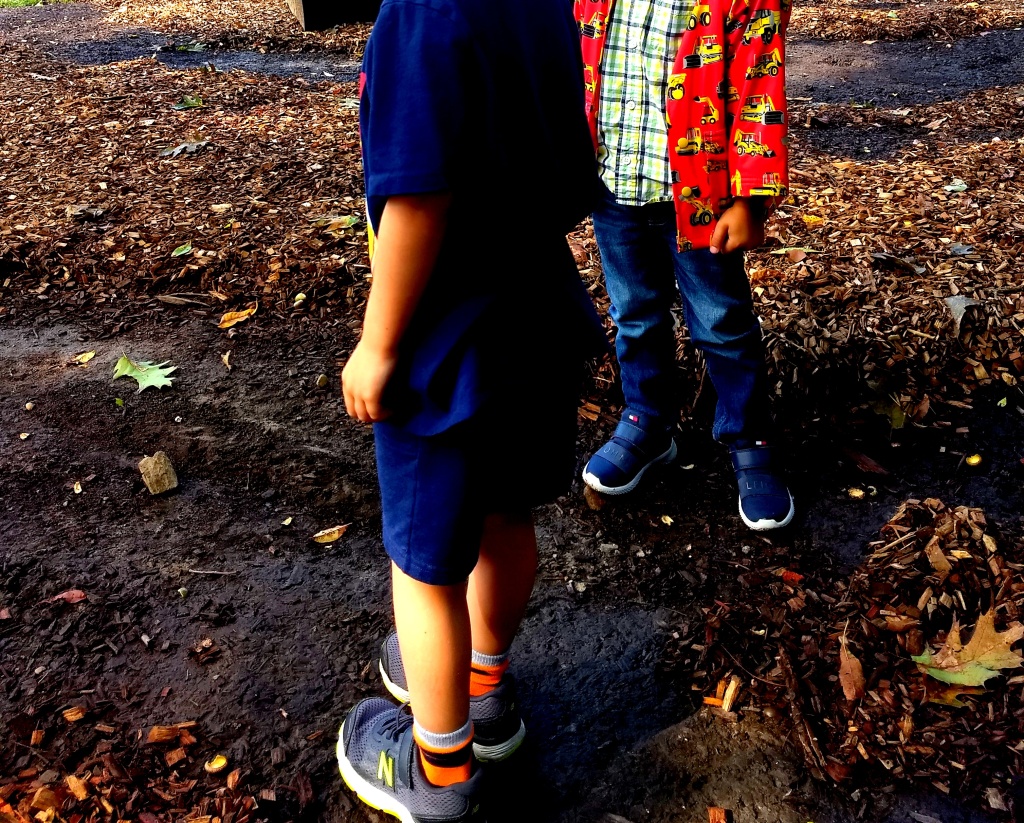
Friendship can be messy. As grown-ups, we can easily forget how murky the “friendship” lines can be when we are little. Here are a few of the comments I overheard recently and a break-down of what was actually happening:
“I don’t want to play with you. You always play with me.”
Four and five-year-olds are naturally egocentric. They are designed this way on purpose. It helps them adapt to a strange world as they encounter new things every moment of their young life. One must learn to have their own perspective before they can understand that of another. When two children find that they have similar interests at the beginning of the year, they often gravitate to either each other or at least the same sets of spaces and materials. At first, it feels like a comfortable connection. As time goes on, one might decide that they would like to try something new with a different friend. This can cause confusion. The child left behind follows the new pair trying to join in, just like every other day. The child who wanted to play with someone else can’t see the perspective of the other and thinks they are just “copying” or “following them everywhere.” As grown-ups, it’s our job to recognize the feelings of both children. Children have a right to play with a variety of classmates AND they have a right to want to continue to play with the one friend they’ve made a connection with so far.
So, how do we solve this dilemma? Today I spoke to this pair to help them communicate more meaning than just, “I don’t want to play with you.” We found out that the follower simply likes the other child, that’s why they were following them. We also found out that the child who didn’t want to play would be happy to play with the other later. He just wanted to play with someone else right now. Once we had more information and language that explained our feelings better, both parties agreed to move off to other groups.
Fast-forward to later in the afternoon: The “I don’t want to play with you” child was holding the hand of the other, gently tugging and saying, “You are on my team!”
“I want to play alone right now.”
Sometimes, people just want to be alone. This is very hard to understand when you are in Pre-K. If you want to play with someone, it is obvious that they would want to play with you. If someone says they want to be alone, you often jump to the conclusion that they don’t like you anymore. We guide the children through these experiences by having both children talk together about what they want at the moment. Realizing that your classmate wants to be alone for a little while instead of forever helps both parties gain understanding.
“No one wants to play with me.”
We hear this comment very often in the beginning of the year. Digging a bit deeper, we find that the child who is alone is either unsure of how to join another group already in play or they want to play a different story or game. In the case of the latter, usually they have not actually asked anyone to play their game, instead just asking, “Will you play with me?” We teach the children two different strategies in the instances above.
If you see a group you’d like to join, we suggest asking, “How can I play?” This will give the group and the child a way to blend a new person into the game. It is also a question that cannot be answered with a single affirmative or negative response.
When you have an idea of what you’d like to play, we suggest telling others your idea. “Mandy, I want to play cats. Do you want to be a cat?” This opens up the dialogue if your classmate has a different idea or is fully interested in your idea.
Relationships in early childhood can be fraught with ups and downs. The good news is vacillating friendships help build the skills we need as adults to both empathize with others and speak up for our own needs. Everything that happens in childhood is learning. Our job as adults is to create a safe space for mistakes and growth to occur.
